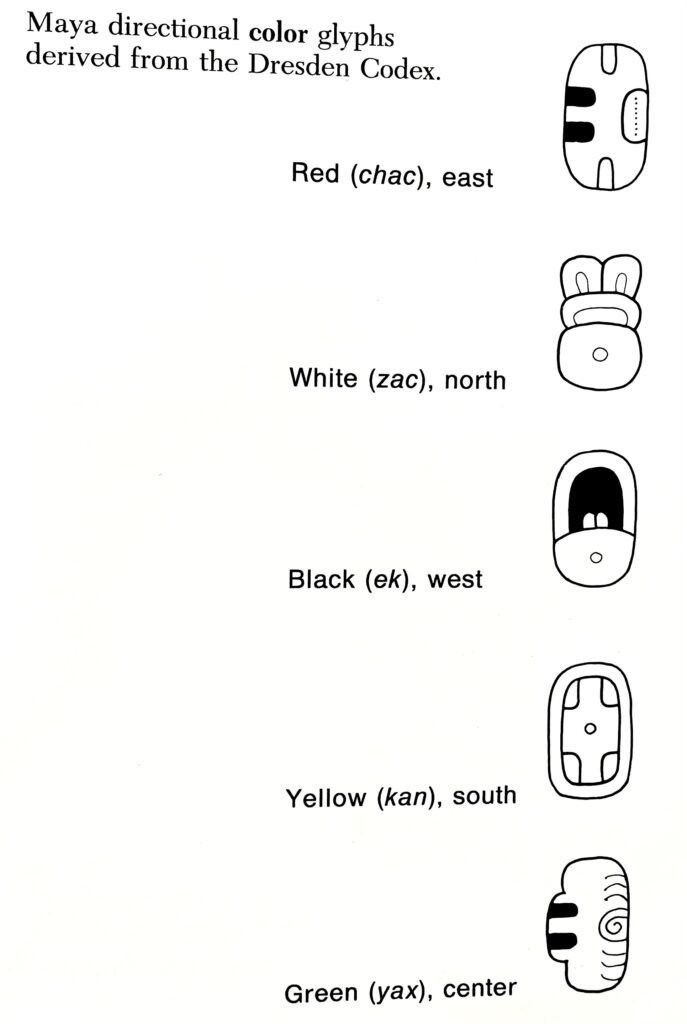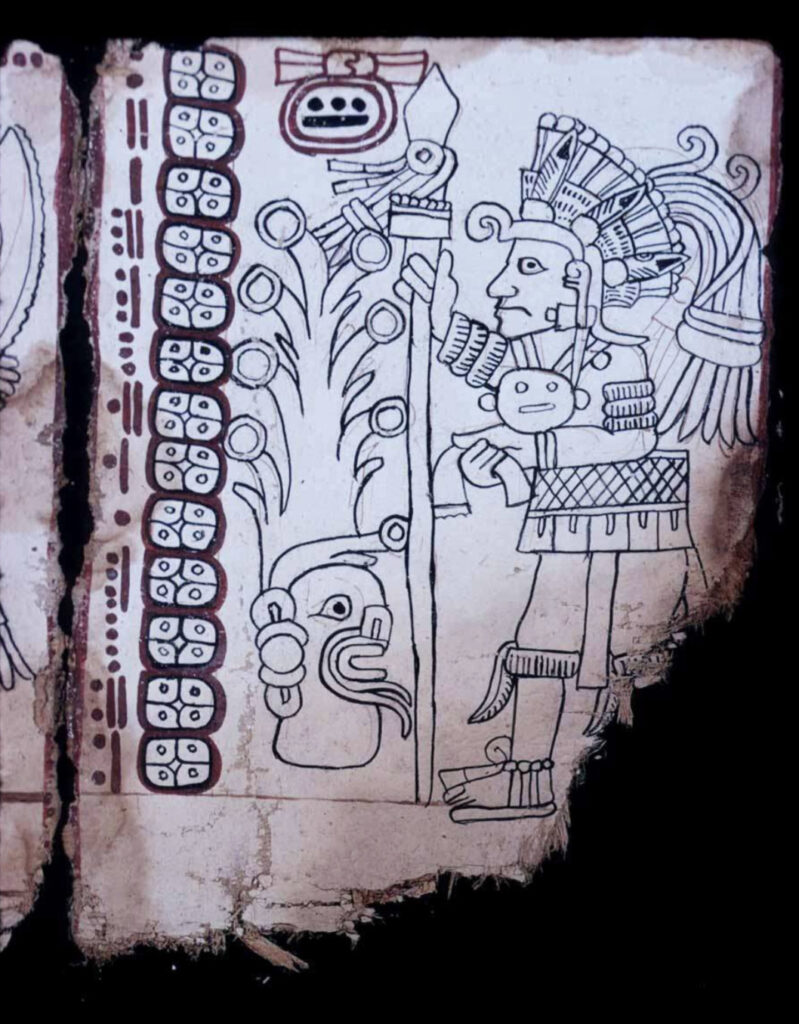Discovering how people once thought is vital in contextualizing the events which unfolded in the past. Learning the rhetoric and philosophies of past people can inform the motivations and ideology which may have contributed to the manner in which events occurred. At a glance, this issue may look like it should be left entirely to historians as thoughts seem to leave no trace in the archeological record. Afterall, you can not dig a 50 centimeter by 50 centimeter sampling hole and find a thought floating around in there.
What an archeologist can uncover in a sampling hole are symbols (which are pretty darn close to thoughts). A symbol is an object, Item, or idea which represents something else. An archeologist in the Yucatan peninsula might uncover a “yellow glyph” and identify it as the Maya symbol for south. (Miller and Taub 65-67) All human cultures are full of symbols, and very few if any are universal to all cultures. Mesoamerican religions offer strong depictions of serpents as revered gods (Miller and Taub 149) whereas Abrahamic religions are more likely to associate snakes with feared “devil.” It is the job of the archeologist to look past their own cultural symbols in order to decipher past ones.

During the conquest of the Americas, many Spaniards lacked the moral relativism to appreciate the culture of Indigenous Mesoamericans. Mesoamerican texts were labeled as idolatry and were burned. Information regarding thousands of years of recorded religion, culture, and ideology were engulfed by flames. Only fifteen pre-contact Mesoamerican books survived the conquest (Turner, 4). Despite this scarcity caused by Colonial atrocities, much can still be learned from these pre Colonial sources.
A wonderful example of this is the oldest surviving book in the Americas, the Códice Maya de México. Dated to 1051-1154, this document measures the movement of the planet Venus, revealing information about Mayan astronomy and mathematics through the way in which they were able to measure planetary movements. These movements are also contextualized within Mayan religiosity.
On page 7 of the codex Venus’s 8 day period of disappearance is represented by Mayan numeral 8 () on the top left corner of the codex (also a symbol!). It is thought that Venus enters a “supernatural realm of jade and sunlight” depicted by a lance holding deity beside a “tree whose branches produce precious round jewels” Venus then returns on page 8 as the morning star (Turner, 76). Although the Mayans had a different writing system, a base 20 counting system, and a pantheon of unique deities. It is still possible to understand their symbols and the roles they played within their society. This example regarding pages 7-8 of the codex is only a sample of what we can learn from pre Hispanic books.

While much can be deciphered from the few remaining pre Colonial books, Archeologists and historians also rely heavily on post contact sources while still thinking critically about the biases held by their authors. Bernal Diaz Del Castillo’s Narrative, for example, can tell us much about Aztec foreign relations with neighboring groups. Besides travelogues, ethnographic sources were also made. Book 10 of the Florentine codex by Fray Bernadino de Sahagun has a list of Aztec Tlatoani and the townships conquered during the reign of each of them. Book six of Sahagun’s codex revolves entirely around Aztec rhetoric and moral philosophy making it extremely useful in understanding Mesoamerican thought. Archeologists must combine knowledge from both types of sources in order to get a clearer image of the past.

Today, the internet presents exciting new opportunities for Mesoamerican cognitive archeology. The Getty Museum is set to launch the Digital Florentine Codex, an innovative and intuitive new way to study that source. The codex will include searchable terms, glossaries, lesson plans, and references to other sources including pre Hispanic ones. By combining pre contact and post contact sources, Mesoamerican thought can be better understood, allowing archaeologists to discover the hidden meaning among symbols lying between the stratigraphic layers of Mexico and Central America. By unearthing lost cognition and increasing its accessibility we can begin to counteract the cultural genocide perpetrated by Spanish colonization.
Works Cited (I have a physical copy of both of these books. If anyone wants to borrow them email me at dmartinezhahn@vassar.edu)
Turner, Andrew D. “Códice Maya de México: Understanding the Oldest Surviving Book of the Americas” Getty Research Institute, 2022, Los Angeles, California.
Miller, Mary. Taub, Carl. “An Illustrated Dictionary of The Gods and Symbols of Ancient Mexico and The Maya.” Thames & Hudson, 1993, New York, New York.
Online Sources
Getty page for the digital Florentine Codex
Library of Congress HD images of the Florentine Codex
An amazing visual source for understanding Tenochtitlan

“It is the job of the archeologist to look past their own cultural symbols in order to decipher past ones.” — How may one ensure to do so without involving their personal bias, and hence promote impartiality and decolonial capacities of the archaeological discourse? What would be a good way to identify and reduce the impact of subjective tendencies?